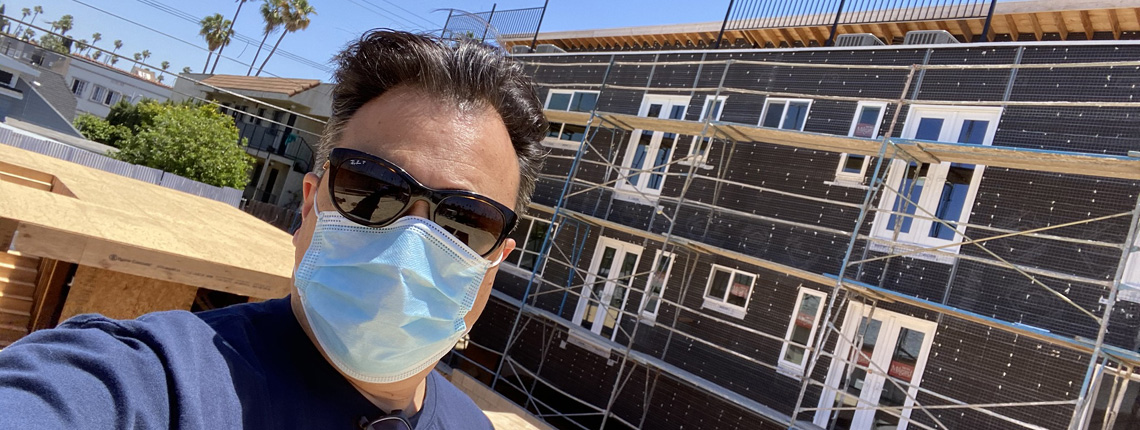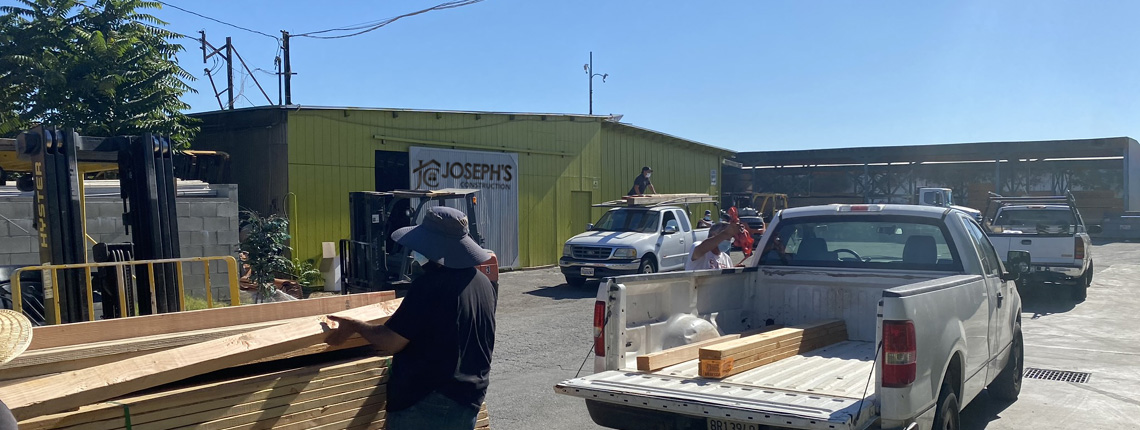Services
ADUs or Accessory Dwelling Units
A while back, California ADU laws were thought off as restrictions. In many cases, it was often prohibitively difficult for homeowners to build an ADU, even if their property theoretically qualified to house an ADU.
The State of California defines an ADU or “accessory dwelling unit” as a self-contained, residential unit located on the same lot as an existing single-family home. An ADU is smaller in size and must include all of the amenities found in a primary dwelling: a kitchen, bathroom, sleeping area, and storage.
An ADU must also conform to all State, Local City and Planning code requirements, as well as energy and building code requirements established by California Title 24 Building Energy Efficiency Standards and Housing and Community Development CALGreen compliance.
There has been a raising demand for ADUs in California over the last few years. There are several reasons why families opt to build ADUs, but the biggest reason is family.
Although economic factors and lack of low cost housing does play a role in this trend, families are discovering that it is not sustainable for an elderly, disabled, or low-income family member to live independently. Maybe your kid who has freshly returned from college and is trying to deal with a student loan debt while they figure out want to do with their college degree.
From the homeowner perspective, this also to provide the level of support their loved one needs without needing to change their lives. In California you can avoid living many hours apart in order to find affordable housing, as hours of driving distance is unrealistic if your loved one requires daily support.
AB 68 (Assembly Member Phil Ting) / AB 881 (Assembly Member Richard Bloom) – Processing Timelines, Ordinance Prohibitions and Triplexes
Assembly Bill 68 and Assembly Bill 881 will have the largest impact on the California housing market. Together, they would render obsolete many of the restrictions cities currently place on ADU construction. They also work hand-in-hand, which is why they’re often examined together.
AB 68, introduced by Assembly Member Ting, and AB 881, introduced by Assembly Member Bloom, requires that local permitting agencies must act on an ADU application within 60 days on a ministerial CEQA exempt basis.
Better still, local authorities are no longer able to impose owner-occupancy restrictions on an ADU--the owner of the property does not have to live in the primary residence to build an ADU on the lot. The owner may now choose to have both units serve as rental properties if they wished, or have relatives use a vacation home as a living space.
The bill also reduces or eliminates many of the existing construction limitations on ADUs.
For example, all ordinances in California must now allow a minimum setback of 4’0” and can no longer use large setbacks to deter homeowners from building ADUs due to restricted lot space. In addition, if an ADU is created in an existing structure like a garage, local ordinances can no longer require replacement parking spaces, granting many homeowners cheaper construction.
ADUs will no longer be subject to minimum or maximum lot sizes based on the percentage of the primary residence either. This significantly reduces the restrictions on ADU size for homeowners who want to construct larger ADUs.
B 68 further allows for ADUs and junior ADUs to be constructed on lots where certain criteria are met, including access and setbacks. Under the new bill, municipalities will be required to approve the following for single-family homes:
They will also be required to approve the following for multi-family homes:
This means a lot could have up to three functional living spaces with considerably fewer barriers for homeowners interested in constructing the units.
SB 13 (Sen. Bob Wieckowski) – Owner-Occupancy Prohibitions and Fee Limitations
Senate Bill 13, introduced by Senator Wieckowski, further reduces restrictions previously in place due to owner occupancy restrictions.
Before SB 13, cities and local permitting agencies could require the owner of a primary family residence to live in that residence before they were allowed to construct an ADU on that property. Now, under SB 13, all proposed ADUs are exempt from that requirement until January 1, 2025.
In addition, agencies are no longer able to impose impact fees on ADUs smaller than 750 square feet. Even for ADUs larger than that, the bill requires that local agencies must assess an impact fee which correlates to the square footage of the main residence.
This makes the process much cheaper for families interested in building ADUs. And much like AB 68 and AB 881, it removes significant limitations that might have previously prevented a family from being able to build an ADU to provide a home for a loved one. This alone makes ADUs far more accessible for average families.
AB 587 (Friedman) – Separate Conveyances
Old laws on ADU ownership in California held that the fortunes of the ADU were tied to that of the primary residence. The ADU was not considered a property in its own right, but rather a unit that was part of the primary residence on the lot. It could not be sold separately from the primary residence, and if the primary residence transferred hands, so did the ADU.
Assembly Bill 587, introduced by Assembly Member Friedman, changes those rules to the benefit of homeowners.
Under the new bill, ADUs may be bought or sold separately from the primary residence if certain conditions are met. Furthermore, affordability restrictions are placed on the sale and deed of the ADU ensuring that it remains preserved as affordable housing for low-income families for 45 years.
In addition, under existing tax law, property owned and operated by a nonprofit organization can qualify for a welfare exemption from property taxes, provided that the property is being rehabilitated for sale to low-income families.
The idea is to increase the ability of affordable housing organizations to sell deed-restricted ADUs to low-income homeowners, allowing for shared ownership models that would significantly increase the availability of affordable housing in the state.
AB 670 (Friedman) – HOA Limitations
Assembly Member Friedman also introduced AB 670. This bill reduces or eliminates many of the restrictions that homeowners associations used to be able to place on ADUs. That’s a huge deal for families, since homeowners associations frequently served as a barrier to constructing ADUs even if the property was otherwise qualified for an ADU.
In simple terms, the new law prevents homeowners associations from barring ADUs on principle, which is what many homeowners associations resorted to.
As the bill puts it, it renders null and void any provision of a governing document that effectively prohibits or unreasonably restricts the construction or use of an accessory dwelling unit or junior accessory dwelling unit on a lot zoned for single-family residential use that meets the minimum standards established for those units.
In plain English, a homeowners association, CC&R, or other neighborhood group cannot outright prohibit ADUs. Any deed and document prohibiting ADUs outright is considered null and void. If a lot legally qualifies for an ADU under all other provisions, a neighborhood group cannot prevent an ADU from being built on that lot.
The bill does not eliminate all restrictions on homeowners associations. They can still impose certain limitations, provided that they don’t unreasonably increase the cost of construction for homeowners.
AB 671 (Friedman) – Local Government Assistance
Assembly Bill 671, another bill introduced by Assembly Member Friedman, is more extensive than AB 670--to the benefit of low-income families.
Under the bill, local housing development agencies are required to include a plan that promotes and incentivizes the construction of ADUs for low-income families. Agencies would have to provide a list of existing state grants and incentives to assist with costs associated with planning, construction, and operation of ADUs.
It effectively creates a state-mandated local housing program to incentivize and prioritize the construction of ADUs as an affordable housing option for California families.
SB 1226 (Bates) – Section 17958.12 of the California Health and Safety Code
Permitting is critical to the ADU building process. The state recognizes that some homeowners constructed ADUs on their properties in previous years without obtaining the appropriate permits in order to begin construction. That said, the state also recognizes the value of keeping these housing units available for families and their loved ones.
So, Senate Bill 1226, introduced by Senator Bates, is designed to offer homeowners a chance to get back into compliance with local permitting laws, thus keeping their ADU as a usable property.
The bill adds Section 17958.12 to the California Health and Safety Code. Under this section, building inspectors are now given the option to apply residential building standards that were applicable at the time the unit was constructed, rather than building standards in place today.
This is permissible under the authority granted to building inspectors, in which modifications may be granted on a case-by-case basis. Furthermore, the building department has the authority to approve materials, appliances, devices, installation, arrangement, or method if the building authority finds that the design of the unit is satisfactory.
If a building permit does not exist, it is up to the local building authority to determine when the unit was constructed and apply the relevant building code standards that were in place at the time of the unit’s original construction.
California ADU Laws and Your Local Jurisdiction
How do these laws apply in your local jurisdiction?
In most cases, state law will override local jurisdictions. That said, the ways in which state law and local law shake out when factored together can get confusing.
The best place to start is by looking at ADU regulations in your city. Make a note of any restrictions and specific requirements. Then, check the state law to see if state law addresses or overturns any of those requirements.
The best way to approach this is by hiring an ADU builder who specializes in ADUs and understands the changing landscape of California building law. That’s where we can help.
Starting Your ADU Project?
If you’re starting your ADU project, navigating California ADU law changes can often feel like navigating a maze. Joseph's Construction serves Southern California, including Los Angels, for over 17 years, specializing in ADU and JADU construction as an affordable, accessible housing option.
We know that housing is a challenge for families, but you should never have to settle for anything less than a home that keeps your family together. Our job is to make that home a reality.
If you’d like to talk about your project, click here to speak with an ADU specialist and find out how we can help your family thrive.





